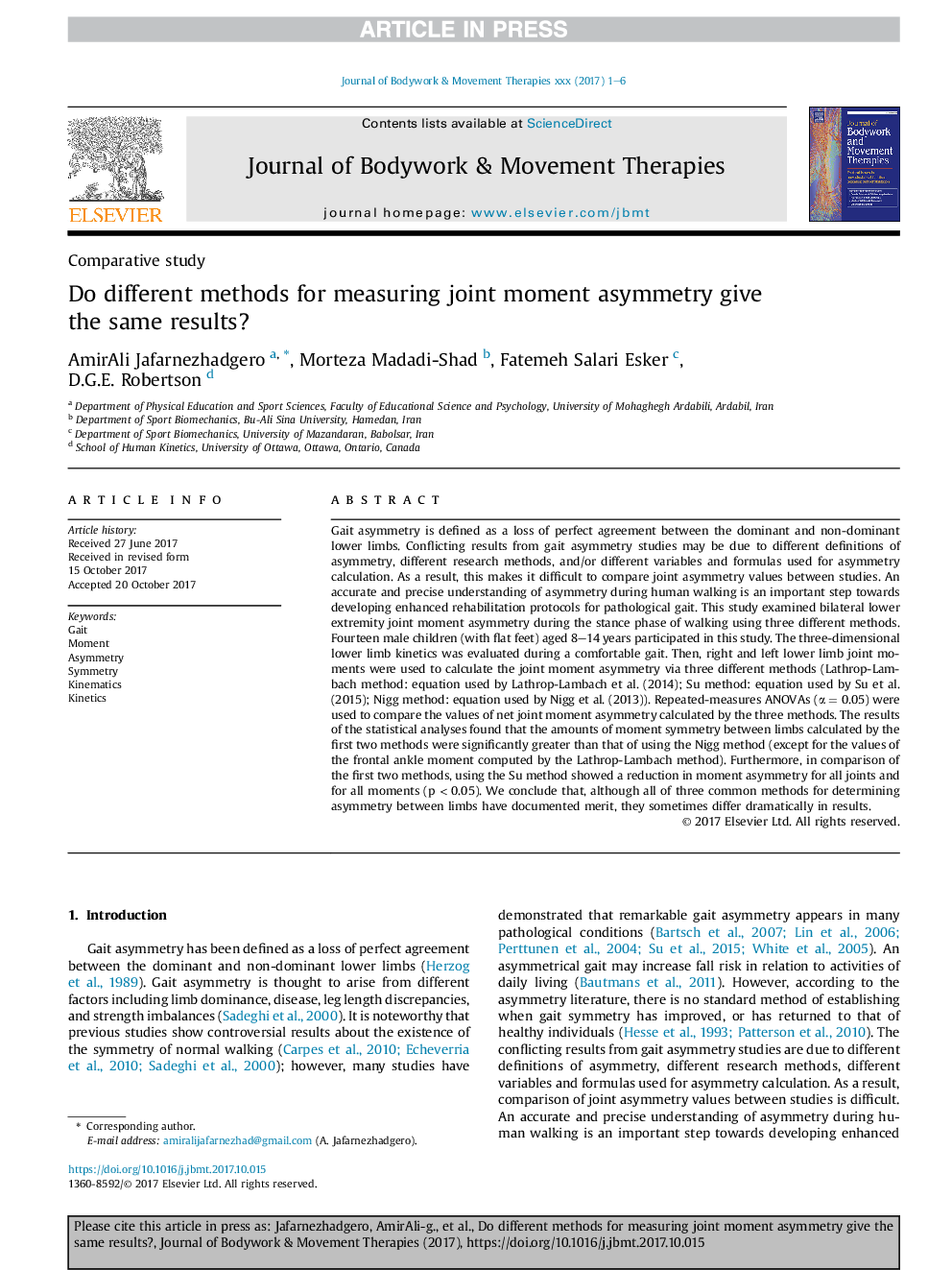| کد مقاله | کد نشریه | سال انتشار | مقاله انگلیسی | نسخه تمام متن |
|---|---|---|---|---|
| 8559043 | 1563033 | 2018 | 6 صفحه PDF | دانلود رایگان |
عنوان انگلیسی مقاله ISI
Do different methods for measuring joint moment asymmetry give the same results?
ترجمه فارسی عنوان
آیا روش های مختلفی برای اندازه گیری عدم تقارن لحظه مشترک وجود دارد؟
دانلود مقاله + سفارش ترجمه
دانلود مقاله ISI انگلیسی
رایگان برای ایرانیان
کلمات کلیدی
موضوعات مرتبط
علوم پزشکی و سلامت
پزشکی و دندانپزشکی
طب مکمل و جایگزین
چکیده انگلیسی
Gait asymmetry is defined as a loss of perfect agreement between the dominant and non-dominant lower limbs. Conflicting results from gait asymmetry studies may be due to different definitions of asymmetry, different research methods, and/or different variables and formulas used for asymmetry calculation. As a result, this makes it difficult to compare joint asymmetry values between studies. An accurate and precise understanding of asymmetry during human walking is an important step towards developing enhanced rehabilitation protocols for pathological gait. This study examined bilateral lower extremity joint moment asymmetry during the stance phase of walking using three different methods. Fourteen male children (with flat feet) aged 8-14 years participated in this study. The three-dimensional lower limb kinetics was evaluated during a comfortable gait. Then, right and left lower limb joint moments were used to calculate the joint moment asymmetry via three different methods (Lathrop-Lambach method: equation used by Lathrop-Lambach et al. (2014); Su method: equation used by Su et al. (2015); Nigg method: equation used by Nigg et al. (2013)). Repeated-measures ANOVAs (α = 0.05) were used to compare the values of net joint moment asymmetry calculated by the three methods. The results of the statistical analyses found that the amounts of moment symmetry between limbs calculated by the first two methods were significantly greater than that of using the Nigg method (except for the values of the frontal ankle moment computed by the Lathrop-Lambach method). Furthermore, in comparison of the first two methods, using the Su method showed a reduction in moment asymmetry for all joints and for all moments (p < 0.05). We conclude that, although all of three common methods for determining asymmetry between limbs have documented merit, they sometimes differ dramatically in results.
ناشر
Database: Elsevier - ScienceDirect (ساینس دایرکت)
Journal: Journal of Bodywork and Movement Therapies - Volume 22, Issue 3, July 2018, Pages 741-746
Journal: Journal of Bodywork and Movement Therapies - Volume 22, Issue 3, July 2018, Pages 741-746
نویسندگان
AmirAli Jafarnezhadgero, Morteza Madadi-Shad, Fatemeh Salari Esker, D.G.E. Robertson,
